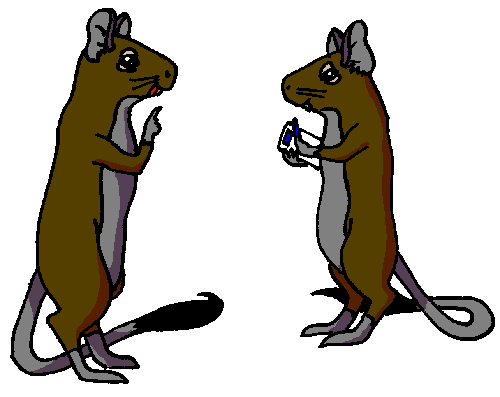 Degu
Tail
Degu
Tail
Survey Results

|
|
|
|
You can see here the results of our findings SO FAR; this page will be updated as we get more results so make sure you check back soon! |
Updated 14/NOV/121
|
>TAIL FLASH RESULTS:< Number of degus surveyed at last update: 107
Figure 1- This graph shows the percentage of all the degus with and without a tail flash surveyed
in 2004-2010 Current
conclusions: ~~
Figure 2- This graph shows a breakdown of the ages and sexes of degus with a tail flash surveyed
in 2004-2010 Of the degus with a tail flash:
Current
conclusions: ~~
Figure 3- This graph shows some information of interest about degus with a tail flash surveyed
in 2004-2010 Current
conclusions: ~~
|
|
>SHED TAIL RESULTS:< Number of degus surveyed at last update: 105
Figure 4- This graph shows the percentage of all the degus with and without a
shed tail surveyed
in 2004-2010 Current
conclusions: ~~
Figure 5-
This graph shows a breakdown of the ages and sexes of degus with a shed tail surveyed
in 2004-2010 Of the degus with a shed tail:
Current
conclusions: ~~
Figure 5- This graph shows some information of interest about degus with a shed
tail surveyed
in 2004-2010 Current
conclusions: ~~
|
|
You can help! Submit your data to us and let the research continue... |
© Copyright C.V. Long BSc 2004 - 2010; Reproduction with permission only.